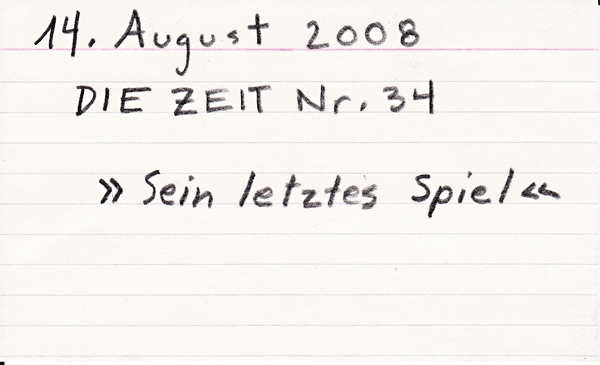
Last weekend, Die Zeit published scans of four notecards from the 138-notecard-manuscript of Vladimir Nabokov’s final, unfinished work, The Original of Laura. Composing on notecards allowed Nabokov to set down his books out of sequence; he said he could see in a flash the whole of a novel and its details, and as notecards accumulated in the shoeboxes where they were stored, Nabokov could shuffle them into final order before his wife, Véra, typed up a more conventional manuscript.
Nabokov fanatics who got their hands on a paper edition of Die Zeit (the cards were not published online) read the author’s tidy, penciled letters, and recognized that the text of three of the cards had already been published. “Her painted eyelids were closed,” begins notecard nine (number written in the upper right corner and circled neatly); “render at last what:” ends notecard eleven. Those framing phrases and what runs between them appeared in 1999, in The Nabokovian, the journal of the International Vladimir Nabokov Society.
Setting aside as premature any discussion of quality, we can consider quantity. The three notecards mentioned contain a grand total of 178 words. If that’s the average for any three of the 138, the whole of The Original of Laura—to be published around the world as a book in fall of 2009—will run something under 8,200 words. The Great Gatsby, a short novel, is 50,000 words.
I concede that the world of letters is under aggressive assault from the button-pushers; I admit that “intellectual life” is an idea and an ideal hard to liberate, these days, from quotes. Still, I would suggest that it might be considered something more than merely a marketing coup that the looming, if still-distant, publication of what amounts, in length, to a short story by a writer of difficult and excellent books, can still make international news. It might even be cheering.


